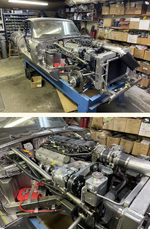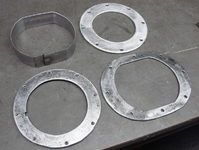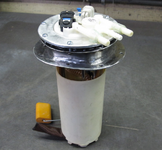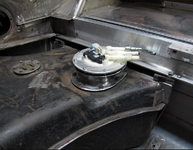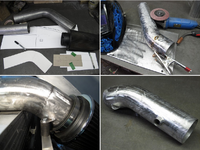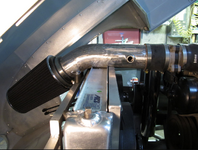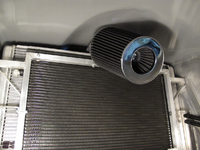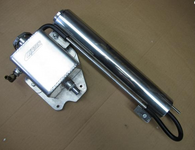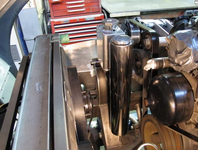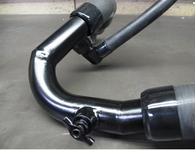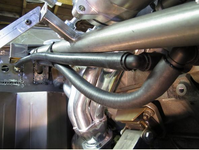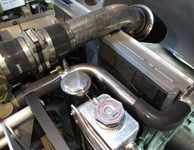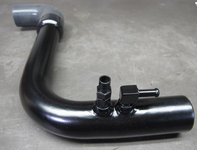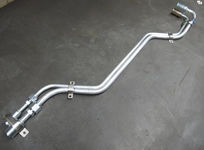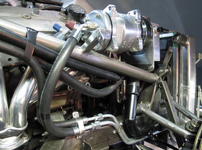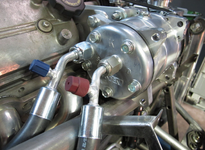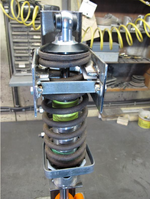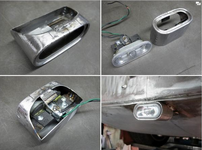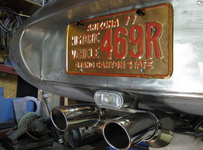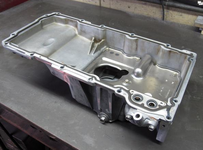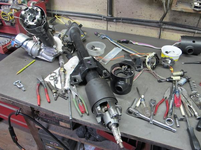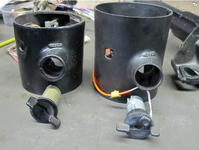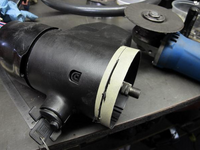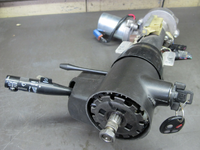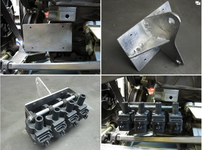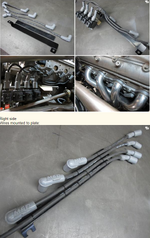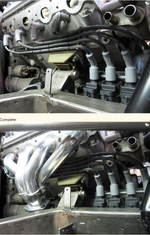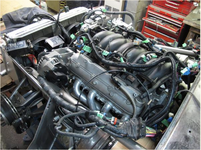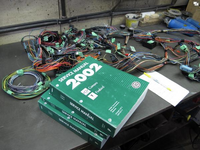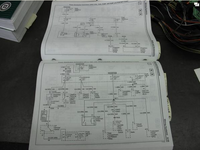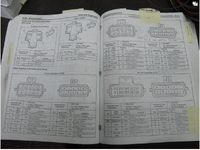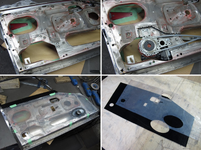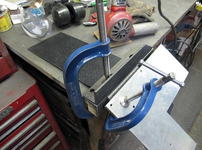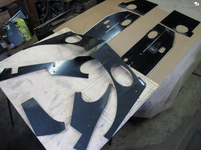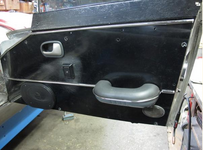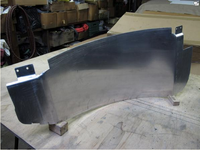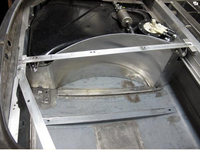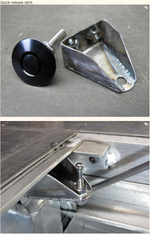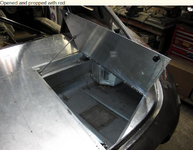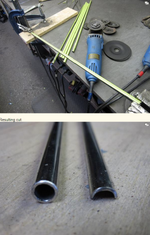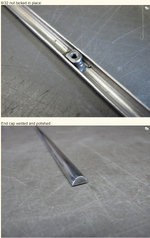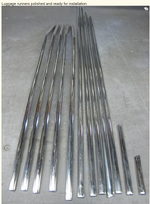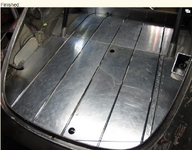Ignition Coil Control Wires
With the ignition coils relocated from on top of the valve covers to the lower sides of the engine block, it was obvious I would have to rewire their control circuits.
The original sub-harness was a compact unit that contained three spliced circuits and one control wire for each coil.
Using new wire, I fabricated two new harnesses.
In the photo:
-original harness
-fabrication, completion and installation
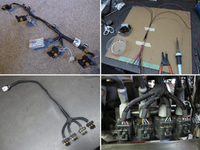
More metal work
Found some more metal work to be done during the wiring phase.
Fabricated a heat shield for the battery and shaped some clips to secure the battery cables to the frame rails.
Also filled the firewall. I was going to wait until I pulled the engine but I wanted a final harness pass through to work with. Looking for a "smooth" firewall.
In the photo:
-Aluminum heat shield fabricated
-Battery cables clipped to frame
-Firewall filled

Choice of connectors in wiring harness
For those unfamiliar with weatherproof connectors in the automotive field, there two types, Metri-pack and Weather pack.
Metri-Pack terminals are different from Weather Pack terminals in that the male terminals have flat tabs, similar to a quick-disconnect, rather than Weather Pack's round pins.
Since the GM harness that I'm using has the Metri-pack style, I chose to stick with them.
In researching Aptiv's products, (formerly Delphi), I found the GT series to my liking.
From the internet:
Aptiv GT 150 Connectors have a small package size suited to fit the shrinking space requirements of today's vehicles and equipment. Tangless terminals with stamped serrations, Connector Position Assurance (CPA), Terminal Position Assurance (TPA), and Primary Lock Reinforcement (PLR) with positive connector seal retention make Aptiv's GT 150 connectors easy to install and durable in heavy duty environments.
Mouser Electronics of Canada helped me choose the connectors I needed. It's a huge global distributor that ships out of Texas, quickly.
In the photo:
- example of a 2 pin GT 150 connector
- 4 pin connector for the A/C trinary switch
- 6 pin connector for the wiper motor
- wiper circuit relays bundled and labeled
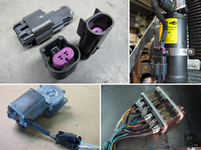
Engine running after first start
After a lot of work deleting circuits, adding circuits and testing circuits, I was ready to try and start the engine. It cranked but wouldn't fire.
Turned out, when I shortened the wires to the crank sensor, I didn't re-pin it correctly. Easily fixed, I was on my way.
Having never heard the engine run, I was a bit apprehensive, but I'm pleased with the results. I've had it up to operating temperature, there are no trouble codes and I'm happy with the exhaust note.
